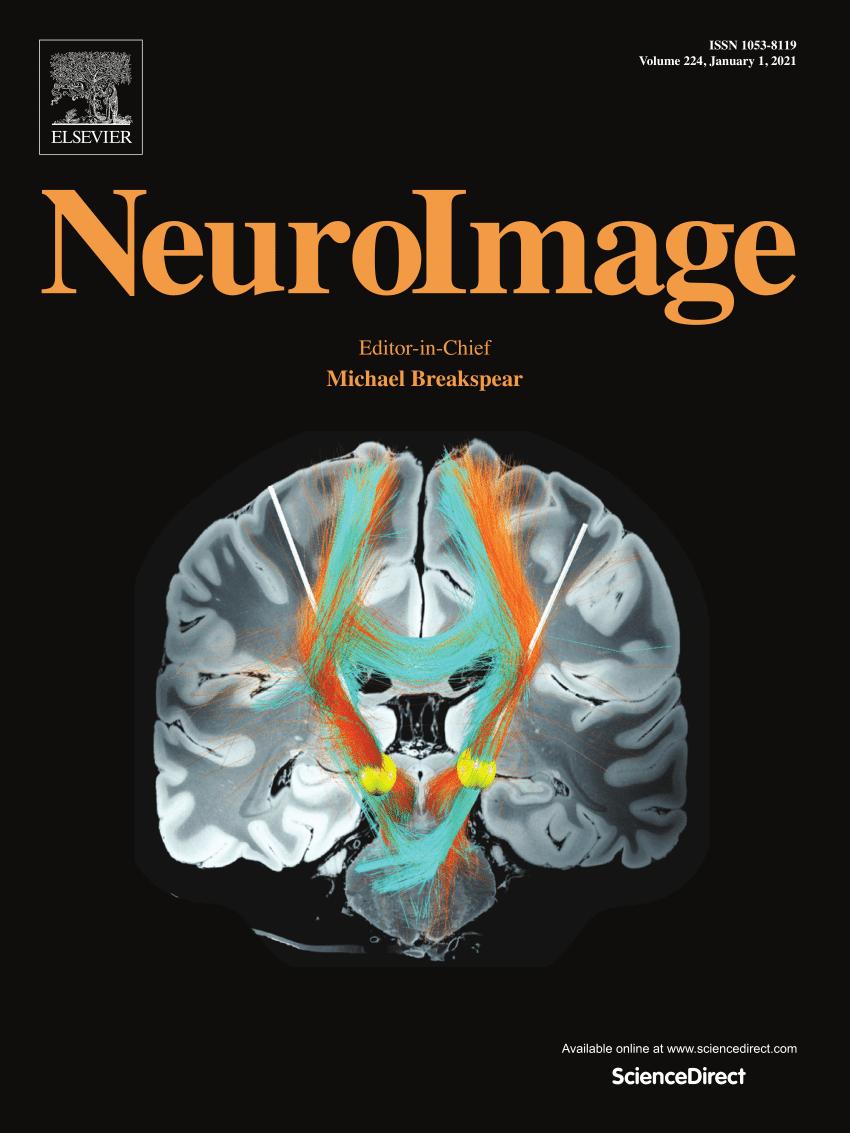Disrupted structural connectivity-gray matter covariance coupling and associated cytoarchitectural and transcriptomic profiles in attention-deficit/hyperactivity disorder
IF 4.5
2区 医学
Q1 NEUROIMAGING
引用次数: 0
Abstract
Background
Attention-deficit/hyperactivity disorder (ADHD) has been associated with disrupted axonal connectivity (termed structural connectivity, SC) and altered interregional coupling of gray matter morphometry (termed gray matter covariance, GMC). However, the relationship between SC and GMC in ADHD remains understudied.
Methods
We investigated this relationship by quantifying the coupling between SC and GMC using neuroimaging data from 109 children with ADHD (aged 10.8 ± 2.3) and 105 typically developing controls (aged 11.2 ± 2.4) comparable for age and sex. Publicly accessible cytoarchitectural and transcriptomic datasets were employed to characterize the cellular and molecular correlates of ADHD-related SC-GMC coupling differences, and a machine learning pipeline was used to investigate its potential in classifying children with ADHD.
Results
Children with ADHD showed aberrant SC-GMC coupling patterns in the right putamen, left hippocampus, and ventral attention network compared to controls. Their abnormal SC-GMC coupling patterns were correlated with sensory-fugal gradient of cytohistological variation and spatially associated with gene expression enriched for neurodevelopment-related biological pathways, including neuron projection development. The classification model based on SC-GMC couplings achieved an area under the receiver operating characteristic curve (AUC) value of 0.67.
Conclusions
Our findings provide novel insights into atypical couplings between brain gray and white matter structural connectomes in ADHD, their histological and transcriptional correlates, and prospects of using these data to expand clinical phenotyping.
注意缺陷/多动障碍的结构连接中断-灰质协方差耦合和相关的细胞结构和转录组学特征。
背景:注意缺陷/多动障碍(ADHD)与轴突连通性中断(称为结构连通性,SC)和灰质形态测量的区域间耦合改变(称为灰质协方差,GMC)有关。然而,SC和GMC在ADHD中的关系仍未得到充分研究。方法:我们使用109例ADHD儿童(年龄10.8±2.3岁)和105例正常发育对照(年龄11.2±2.4岁)的神经影像学数据,通过量化SC和GMC之间的耦合来研究这种关系。使用可公开访问的细胞结构和转录组数据集来表征ADHD相关SC-GMC偶联差异的细胞和分子相关性,并使用机器学习管道来研究其分类ADHD儿童的潜力。结果:与对照组相比,ADHD儿童在右侧壳核、左侧海马和腹侧注意网络中表现出异常的SC-GMC耦合模式。SC-GMC异常偶联模式与细胞组织学变异的感觉-真菌梯度相关,与神经元投射发育等神经发育相关生物学通路的基因表达在空间上相关。基于SC-GMC耦合的分类模型的受者工作特性曲线下面积(AUC)值为0.67。结论:我们的研究结果为ADHD患者脑灰质和白质结构连接体之间的非典型耦合、其组织学和转录相关性以及利用这些数据扩大临床表型的前景提供了新的见解。
本文章由计算机程序翻译,如有差异,请以英文原文为准。
求助全文
约1分钟内获得全文
求助全文
来源期刊

NeuroImage
医学-核医学
CiteScore
11.30
自引率
10.50%
发文量
809
审稿时长
63 days
期刊介绍:
NeuroImage, a Journal of Brain Function provides a vehicle for communicating important advances in acquiring, analyzing, and modelling neuroimaging data and in applying these techniques to the study of structure-function and brain-behavior relationships. Though the emphasis is on the macroscopic level of human brain organization, meso-and microscopic neuroimaging across all species will be considered if informative for understanding the aforementioned relationships.
 求助内容:
求助内容: 应助结果提醒方式:
应助结果提醒方式:


